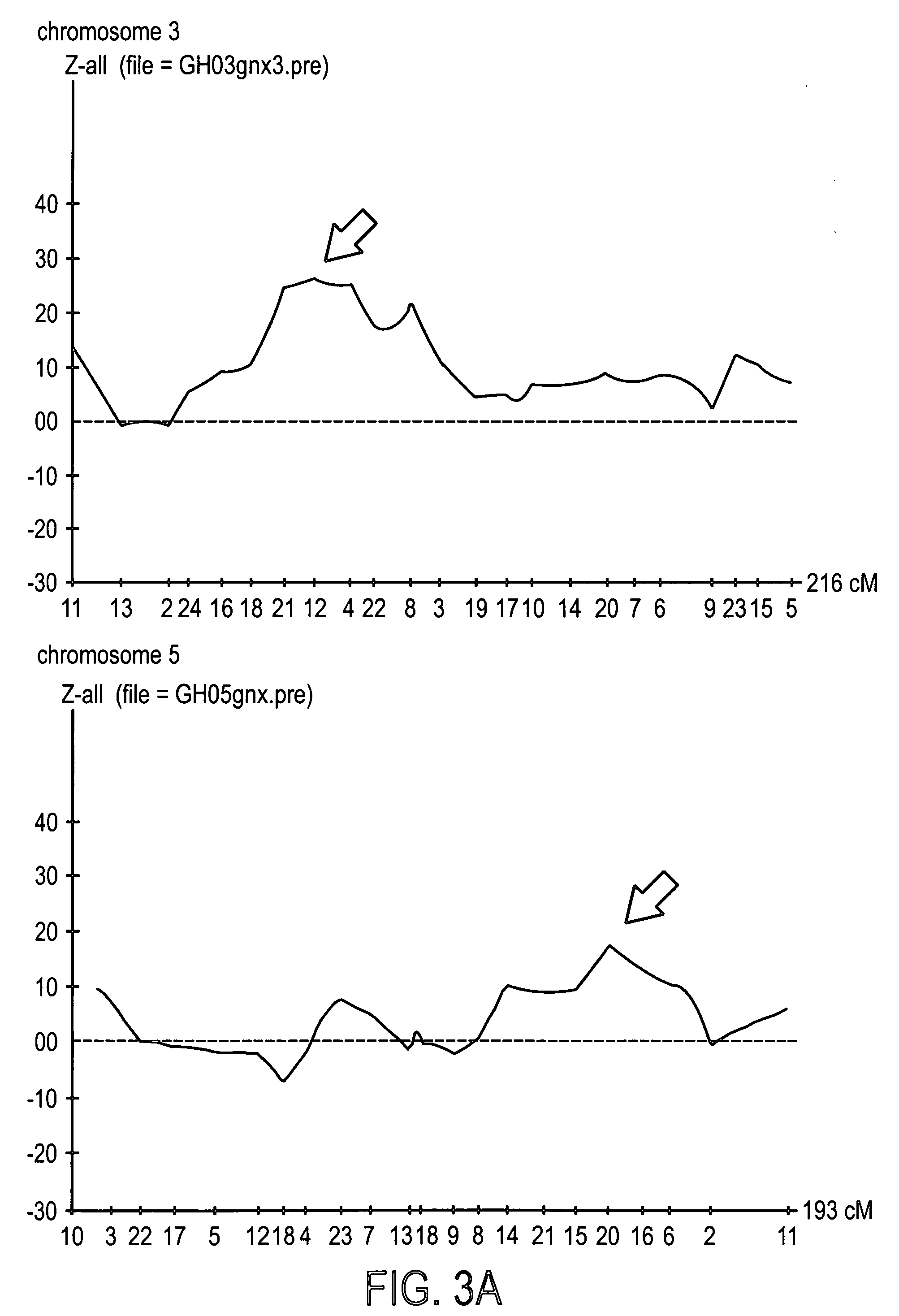Genes from Chromosome 3, 5 and 11 involved in premature canities
a technology of chromosome 3, 5 and 11, which is applied in the field of genes from chromosome 3, 5 and 11 involved in premature canities, can solve the problems of insufficient characterization of analyses carried out on insufficiently characterized genes, inaccurate loci, and inability to retain certain families
- Summary
- Abstract
- Description
- Claims
- Application Information
AI Technical Summary
Benefits of technology
Problems solved by technology
Method used
Image
Examples
example 3
Examples of Compositions
[0539] Hair lotion
DNA fragment from chromosomal zone included0.5gbetween markers D3S1277 and D3S1285propylene glycol20g95° ethanol30gwater qsp100g
[0540] This lotion was applied daily to the zones to be treated, preferably to the whole scalp, for at least 10 days and preferably 1 to 2 months.
[0541] A reduction in the appearance of white or gray hairs and re-pigmentation of gray hair was observed.
[0542] Treatment shampoo
DNA fragment from the chromosomal zone1.5gincluded between the D5S2115 and D5S422 markerspolyglyceryl 3-hydroxylarylether26ghydroxypropyl cellulose sold as Klucell G2gby Herculespreservativesqps95° ethanol50gwater qsp100g
[0543] This shampoo was used at each wash, leaving it on the hair for about one minute. Long term use, of the order of two months, resulted in progressive re-pigmentation of gray hair. This shampoo could also be used preventatively to retard whitening of the hair.
[0544] Treatment gel
DNA fragment from the chromosomal zo...
PUM
| Property | Measurement | Unit |
|---|---|---|
| Volume | aaaaa | aaaaa |
| Volume | aaaaa | aaaaa |
| Volume | aaaaa | aaaaa |
Abstract
Description
Claims
Application Information
 Login to View More
Login to View More - R&D
- Intellectual Property
- Life Sciences
- Materials
- Tech Scout
- Unparalleled Data Quality
- Higher Quality Content
- 60% Fewer Hallucinations
Browse by: Latest US Patents, China's latest patents, Technical Efficacy Thesaurus, Application Domain, Technology Topic, Popular Technical Reports.
© 2025 PatSnap. All rights reserved.Legal|Privacy policy|Modern Slavery Act Transparency Statement|Sitemap|About US| Contact US: help@patsnap.com



